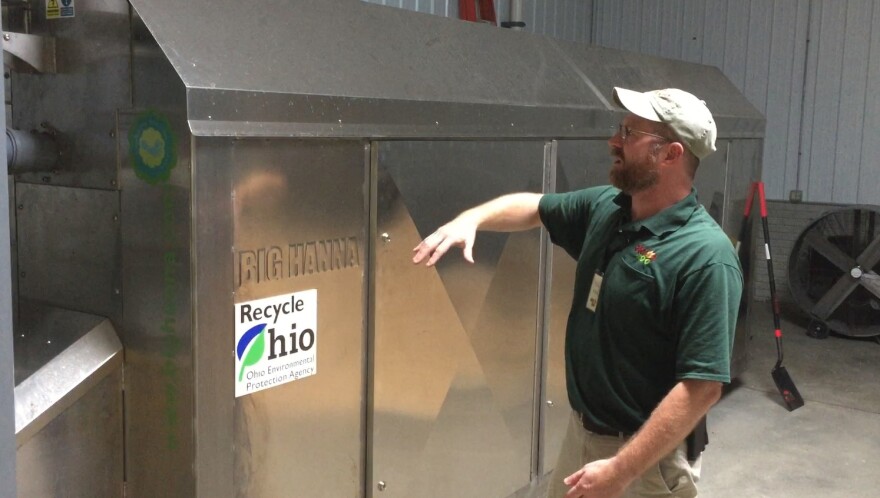People in Summit County got to see sustainability in action as part of the 16th annual tour over the weekend which featured homes, a school, and the Akron Zoo.
The tour started and ended at the Zoo’s Big Hanna composter. In between, participants stopped at the Akron Metro transit station, Old Trail School and the solar-powered Hudson home of State Rep. Casey Weinstein (D-Hudson).
Chris Norman, director of Capital Projects and Sustainability at the Akron Zoo, led the tour. “It’s a way for folks to see different aspects of sustainability. In this case, there was geothermal, there were other elements on water conservation [and] zero waste that were also featured.”
“Big Hanna” is a Swedish-made composting machine the zoo installed last year. Norman says each day, Big Hanna takes in about 130 pounds of organic waste, such as manure and the utensils used at concession stands. But that’s about one-third of the machine’s capacity. So Big Hanna has also been used to help compost waste from large events like the PorchRokr festival and Blue Heron Homecoming.
“We’ve talked to several private and public institutions to kind of explore this. Because it’s something that ultimately has a return on investment. Our investment is roughly a nine-year investment. We’re continuing to shorten that because we’re looking for ways to sell the compost or divert further.”
Norman adds that some of that excess capacity will also be used by the zoo itself as it expands in the future. A grant from the Ohio EPA helped pay for the $180,000 machine.
This year there were also separate tours in , , and .





